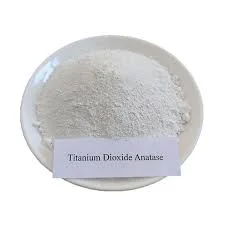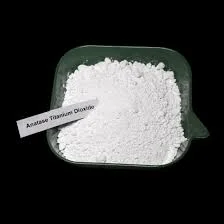Anatase titanium dioxide (TiO2) is a versatile and widely used compound with various applications across different industries. This blog post aims to provide an in-depth understanding of the properties, applications, and manufacturing process of anatase titanium dioxide. By exploring its unique characteristics and production methods, we can appreciate its significance in numerous fields.
I. Properties of Anatase Titanium Dioxide
Anatase titanium dioxide possesses several key properties that contribute to its widespread use. These properties include:
1. Crystal Structure: Anatase TiO2 has a tetragonal crystal structure, which influences its physical and chemical properties.
2. Photocatalytic Activity: One of the most remarkable features of anatase TiO2 is its photocatalytic activity, enabling it to initiate chemical reactions under light irradiation.
3. High Refractive Index: Anatase TiO2 has a high refractive index, making it useful in optical applications such as coatings and pigments.
4. UV Absorption: This compound exhibits excellent ultraviolet (UV) absorption properties, making it suitable for sunscreens and UV-blocking materials.
5. Non-toxicity: Anatase TiO2 is generally considered non-toxic, making it safe for various applications, including cosmetics and food products.

II. Applications of Anatase Titanium Dioxide
The unique properties of anatase titanium dioxide make it highly valuable in a wide range of applications. Some notable applications include:
1. Photocatalysis:
Anatase TiO2 is extensively used as a photocatalyst for environmental remediation, air purification, and water treatment. Its ability to degrade organic pollutants and kill bacteria under UV light makes it an ideal choice for these applications.
2. Solar Energy:
Anatase TiO2 plays a crucial role in solar energy conversion. It is used in dye-sensitized solar cells (DSSCs) and perovskite solar cells as a key component for efficient light absorption and electron transport.
3. Coatings and Pigments:
Due to its high refractive index and UV absorption properties, anatase TiO2 is widely used in coatings, paints, and pigments. It provides enhanced durability, brightness, and UV protection to various surfaces.
4. Cosmetics and Personal Care:
Anatase TiO2 is a common ingredient in cosmetics and personal care products such as sunscreens, lotions, and foundations. It acts as a UV filter, protecting the skin from harmful UV radiation.
5. Food and Beverage Industry:
Anatase TiO2 is used as a food additive in the food and beverage industry. It acts as a whitening agent, providing a bright and appealing appearance to products like candies, chewing gums, and powdered drinks.
III. Manufacturing Process of Anatase Titanium Dioxide
The manufacturing process of anatase titanium dioxide involves several steps, including:
1. Ore Extraction:
Titanium dioxide is primarily derived from naturally occurring minerals such as ilmenite and rutile. These minerals are mined and processed to extract titanium dioxide ore.
2. Ore Purification:
The extracted ore undergoes purification processes to remove impurities and separate titanium dioxide from other minerals. This step ensures the production of high-quality titanium dioxide.
3. Chemical Processing:
The purified ore is then subjected to chemical processing, where it is treated with sulfuric acid or other chemicals to convert it into a soluble form. This process produces a white precipitate known as titanium dioxide pigment.
4. Calcination:
The titanium dioxide pigment is further processed through calcination, where it is heated at high temperatures to convert it into its crystalline form, such as anatase or rutile.
5. Milling and Finishing:
The calcined titanium dioxide is milled to achieve the desired particle size and surface properties. It may undergo additional treatments and coatings to enhance its performance for specific applications.

Conclusion
Anatase titanium dioxide is a remarkable compound with diverse properties and applications. Its unique characteristics, including photocatalytic activity, high refractive index, and UV absorption, make it indispensable in various industries. Understanding the manufacturing process of anatase titanium dioxide further highlights its significance and the meticulous steps involved in its production. As technology advances, we can expect to see even more innovative applications for this versatile compound in the future.
Anatase Titanium Dioxide: A Key Ingredient in High-Quality Inks and Pigments
